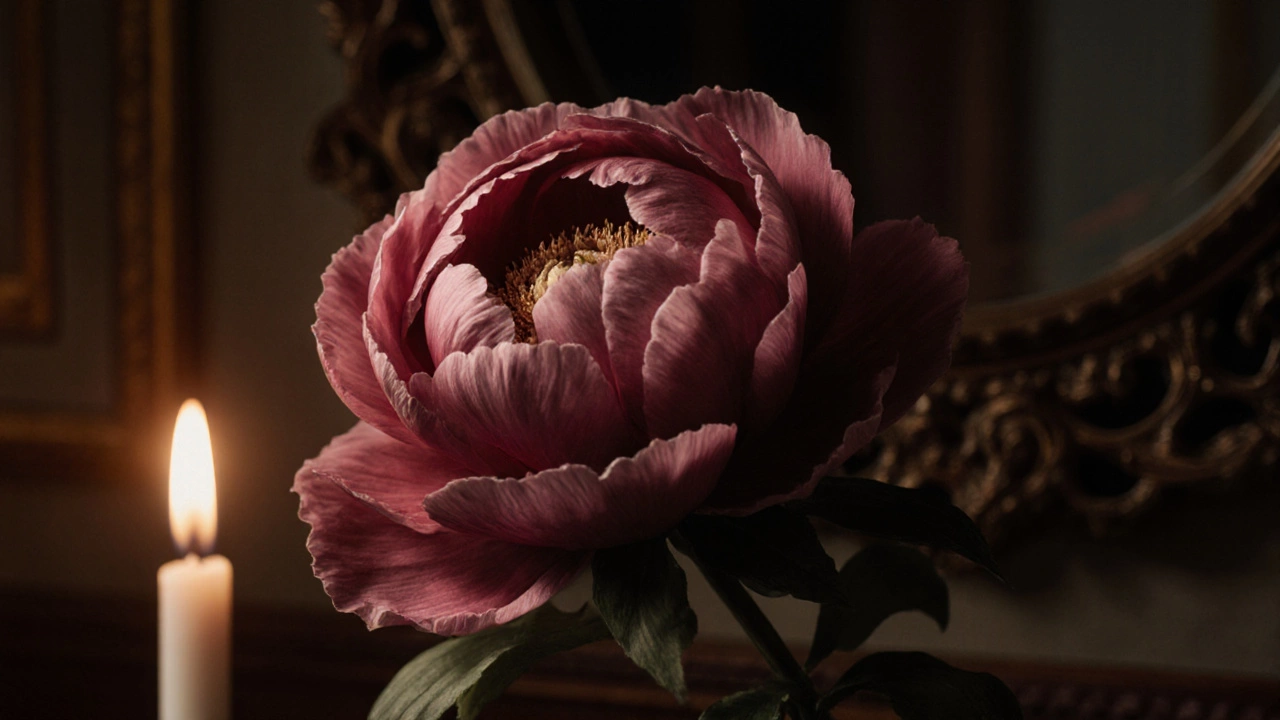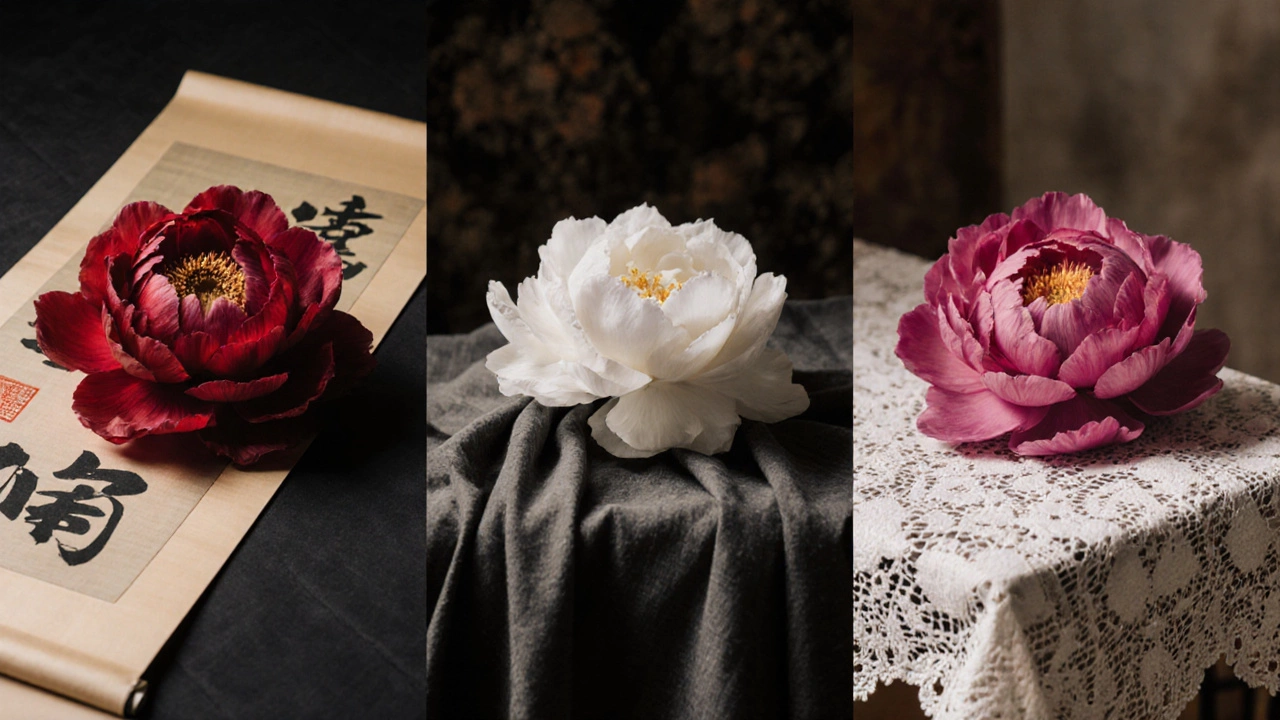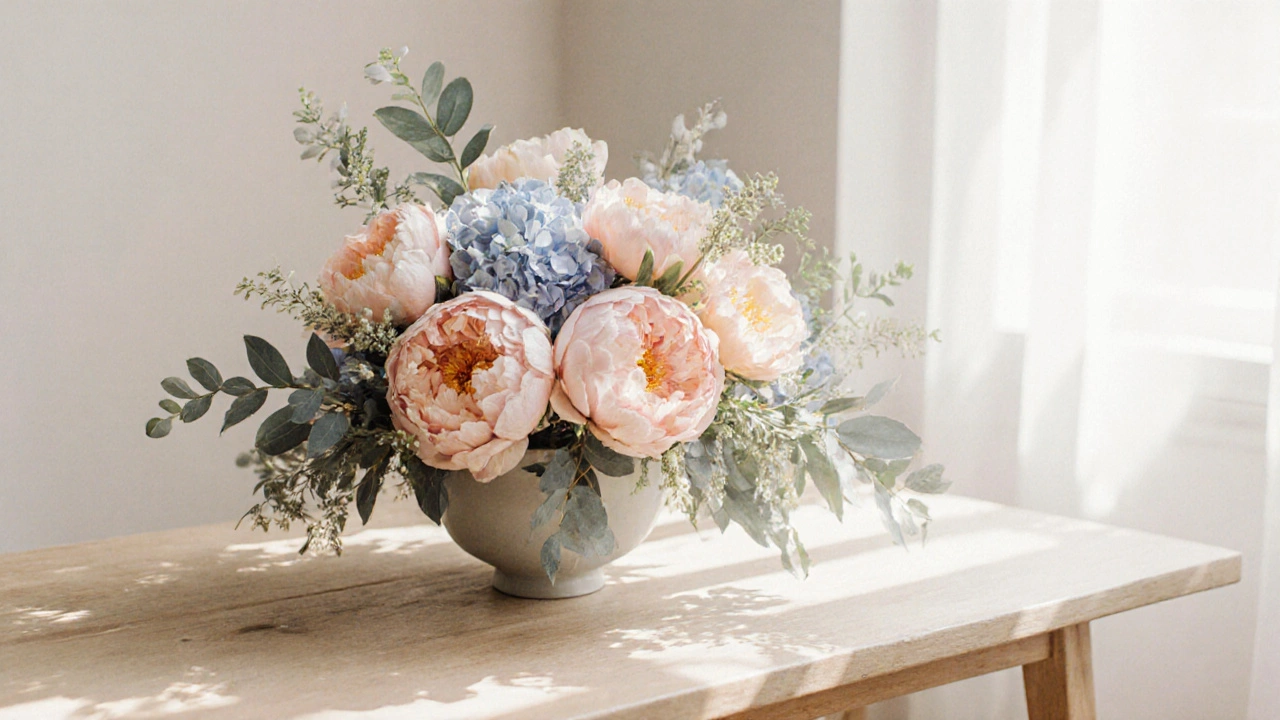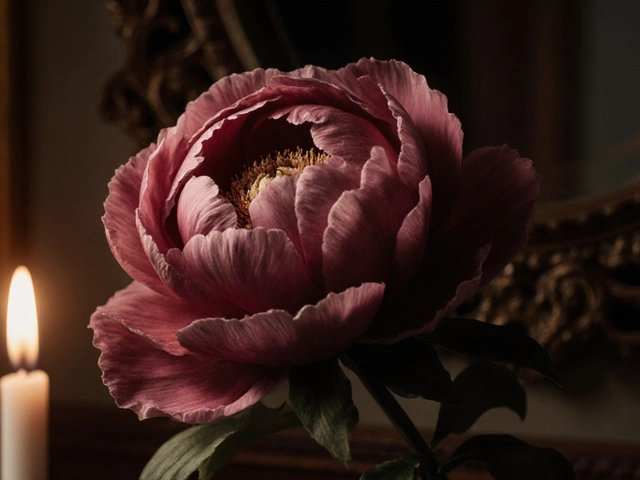
Peony Symbolism Explorer
Symbolic Interpretation
Peony Symbolism Reference
Positive Meanings
- • Romance & Love
- • Prosperity
- • Beauty & Elegance
- • Femininity
Negative Meanings
- • Arrogance
- • Excess
- • Shame
- • Broken Hearts
Cultural Notes
- • Chinese: King of Flowers
- • Victorian: Bashfulness
- • Japanese: Mourning
- • Greek: Narcissism
When you picture a peony, you probably see a lush, romantic bloom that graces wedding bouquets and garden displays. But not every culture sees the flower as a pure symbol of love and prosperity. In some traditions the peony negative meaning carries warnings about pride, excess, and even misfortune. This article untangles those darker threads so you can decide whether a peony fits your event, décor, or personal symbolism.
Key Takeaways
- Peonies can symbolize arrogance, greed, and shame in Chinese and Victorian flower language.
- Red and dark pink peonies often convey danger or a broken heart, while white can hint at mourning.
- Modern Western weddings still favor peonies for romance, but understanding the negative nuance helps avoid cultural slip‑ups.
- Choosing the right color, arrangement style, or complementary flowers can neutralize unwanted meanings.
- FAQs at the end cover common concerns about gifting peonies and using them in ceremonies.
Historical Roots of Peony Symbolism
To grasp the negative side, you first need to see where peony meanings began. The Peony is a perennial herbaceous plant native to East Asia and the Mediterranean, celebrated for its large, fragrant blossoms has been revered for over 2,000 years. In Chinese culture the peony is known as the "king of flowers" and was associated with wealth and honor during the Tang dynasty. Yet, because the flower often blooms in profusion, Confucian scholars warned that too much abundance could breed complacency and hubris.
Meanwhile, in 19th‑century England, the Victorian language of flowers was a coded system where each bloom conveyed a specific sentiment in social communication. Peonies entered the lexicon as symbols of bashfulness and romance, but the same source also noted a darker twist: a fully opened, heavy‑petaled peony could mean "I am proud and difficult to please".

Positive vs. Negative: How Context Shapes Meaning
Most wedding blogs list peonies as a top‑choice flower for their lush texture and pastel palette. That positive spin is rooted in modern Western design trends, where the flower’s sheer visual impact outweighs historical nuance. However, cultural context matters. In Greek mythology the peony is linked to the tragic story of Narcissus, whose vanity caused his downfall, the bloom becomes a cautionary emblem of self‑obsession.
Similarly, funeral customs in parts of Japan and Korea use white peonies to honor the deceased, signaling mourning rather than celebration. When a wedding planner incorporates white peonies without recognizing this tradition, it can unintentionally evoke grief for guests familiar with those practices.
Specific Negative Meanings Across Cultures
- Arrogance and Pride: In traditional Chinese symbolism, a fully bloomed peony is sometimes interpreted as a sign that the owner is overly confident or “showing off”.
- Greed and Materialism: The same flower’s reputation for luxury can imply an excessive focus on wealth, especially when paired with gold accessories.
- Shame and Guilt: Victorian flower dictionaries warned that giving a peony to a woman could suggest she has behaved shamefully if the bouquet is overly lavish.
- Broken Heart: Dark pink or deep crimson peonies have been used in Eastern literature to denote love lost or a relationship that has turned sour.
- Mourning: White peonies, especially in East Asian funerary arrangements, convey sorrow and remembrance rather than purity.
Color‑Specific Negative Connotations
Color dramatically shifts a peony’s message. Below is a quick reference table that lays out the most common negative interpretations.
| Color | Negative Meaning | Typical Region |
|---|---|---|
| Red / Deep Crimson | Danger, broken heart, passionate wrath | China, Korea |
| Dark Pink | Arrogance, excessive pride | Victorian England |
| White | Mourning, remembrance | Japan, Korea |
| Yellow (rare) | Deceit, false hope | Western folklore |
| Lavender | Spiritual confusion, unsettled mind | Modern metaphysical circles |

Modern Usage: When the Negative Doesn't Matter
Today, many couples choose peonies for their softness, fragrance, and photogenic quality, often ignoring the old myths. For most Western guests, a blush pink peony still reads as "romance" rather than "arrogance". However, if your wedding includes guests from cultures where peony symbolism is still taught-such as Chinese diaspora families-acknowledging the potential misinterpretation can prevent awkward moments.
Design professionals often neutralize negative vibes by:
- Pairing peonies with humble greens like eucalyptus, which convey grounding.
- Choosing lighter shades (soft pink, pastel peach) that are less associated with arrogance.
- Adding complementary flowers that have clear positive meanings, such as hydrangea symbolizing heartfelt gratitude.
How to Avoid Unwanted Connotations in Your Event
- Know Your Guest List: If a significant portion of attendees are from East Asian backgrounds, steer clear of white peonies for an anniversary or celebratory party.
- Pick the Right Shade: Opt for pale pink or peach, which are generally seen as hopeful and gentle across cultures.
- Mix with Meaningful Greens: Incorporate foliage like fiddle leaf fig which conveys stability and humility to soften any perceived excess.
- Explain Your Choice: A brief note on the wedding program-"Peonies chosen for their beauty and endurance"-can reframe perception.
- Consult a Cultural Expert: When in doubt, ask a florist familiar with cross‑cultural symbolism to review your bouquet plan.
Frequently Asked Questions
Are peonies ever considered a safe gift?
In most Western contexts a peony is a safe and elegant gift. The only caveat is when the recipient follows Chinese or Victorian flower language, where the color and timing can turn a friendly gesture into a comment on pride or excess.
What color peony should I avoid for a wedding?
White peonies can evoke mourning in East Asian traditions, and deep red or dark pink may suggest arrogance or a broken heart in Chinese and Victorian contexts. Light pink, peach, and pastel shades are the safest choices.
Can I mix peonies with other flowers to neutralize negative meanings?
Yes. Pairing peonies with modest greenery (eucalyptus, ferns) or flowers that symbolise gratitude (hydrangea, sweet pea) helps balance any potentially boastful interpretation.
Do modern florists still teach the old symbolic meanings?
Many professional florists study flower language as part of their training, especially those serving multicultural clients. However, the emphasis is often on personal preference and visual impact rather than strict symbolism.
Is it okay to use peonies for a funeral?
In Japan and Korea white peonies are traditionally part of funeral arrangements. If you’re planning a memorial, choosing white or ivory peonies aligns with local customs; otherwise, a different flower may be more appropriate for a celebration of life.
Releted Post
9 Oct 2025


Comments
Post Comment